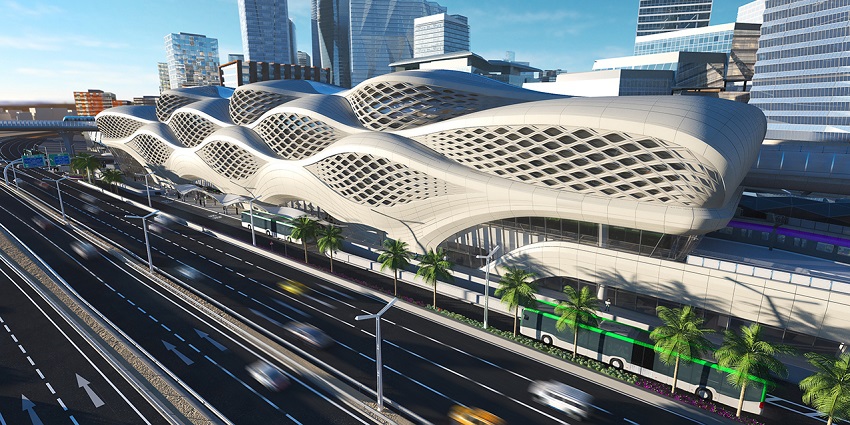Inside the $22.5 Billion Riyadh Metro Project Powering a New Era of Urban Excellence in Saudi Arabia
The $22.5 billion Riyadh Metro Project is not merely a transport system; it is the heartbeat of Saudi Arabia’s modern transformation. From cutting-edge engineering and world-class design to green mobility and economic regeneration, this megaproject captures the very essence of the Kingdom’s vision for a connected, sustainable, and globally competitive capital.
The Vision Driving Riyadh’s Urban Mobility Transformation
Saudi Arabia is a nation in motion, literally and figuratively. With Vision 2030 guiding its transformation, the Kingdom is reshaping its cities to reflect modernity, innovation, and sustainability. Among its most powerful symbols of progress is the Riyadh Metro Project, a $22.5 billion public transport megastructure that’s rewriting the story of mobility in the Middle East.
Launched in 2014 under the supervision of the ArRiyadh Development Authority (ADA), the project forms the backbone of the Riyadh Public Transport System, a multi-modal network integrating metro lines, bus routes, and park-and-ride facilities into a seamless, user-friendly system. Its scale and ambition rival some of the world’s most advanced metro networks, from Dubai to Singapore.
As Riyadh’s population continues to soar, forecast to exceed 9.6 million residents by 2030, the need for sustainable, reliable, and efficient transport becomes urgent. The Riyadh Metro was designed to meet that need and more: to redefine how citizens experience their city and to set a global precedent for smart city transport systems in Saudi Arabia.

The Scale of the Riyadh Metro: A Global Engineering Marvel
The Riyadh Metro Project stretches across 176 kilometres of rail, supported by 85 modern stations distributed along six colour-coded lines. Once fully operational, it will be one of the world’s largest automated metro systems, second only to a handful of ultra-modern networks in Asia.

| Line | Colour | Length (km) | Key Areas Covered | Consortium |
| Line 1 | Blue | 38 | Olaya Street to Batha | BACS Consortium (Bechtel, Almabani, CCC, Siemens) |
| Line 2 | Red | 25 | King Abdullah Road Corridor | BACS Consortium |
| Line 3 | Orange | 40 | Madinah Road to Al Khair District | ANM (Salini Impregilo, Hitachi Rail, Larsen & Toubro) |
| Line 4 | Yellow | 29 | King Khalid International Airport to King Abdullah Financial District (KAFD) | FAST Consortium (Samsung C&T, Alstom, FCC) |
| Line 5 | Green | 12.8 | King Abdulaziz Road | FAST Consortium |
| Line 6 | Purple | 13 | Eastern Riyadh | FAST Consortium |
Each line has been meticulously designed for functionality and urban integration. Together, they form a high-speed transit spine running through the capital linking residential zones, commercial districts, educational institutions, hospitals, and airports.
Design Brilliance: Fusing Culture, Climate, and Technology
The Riyadh Metro isn’t just an engineering achievement; it’s an architectural masterpiece. Every design element reflects a balance between Saudi heritage, environmental sustainability, and digital innovation.
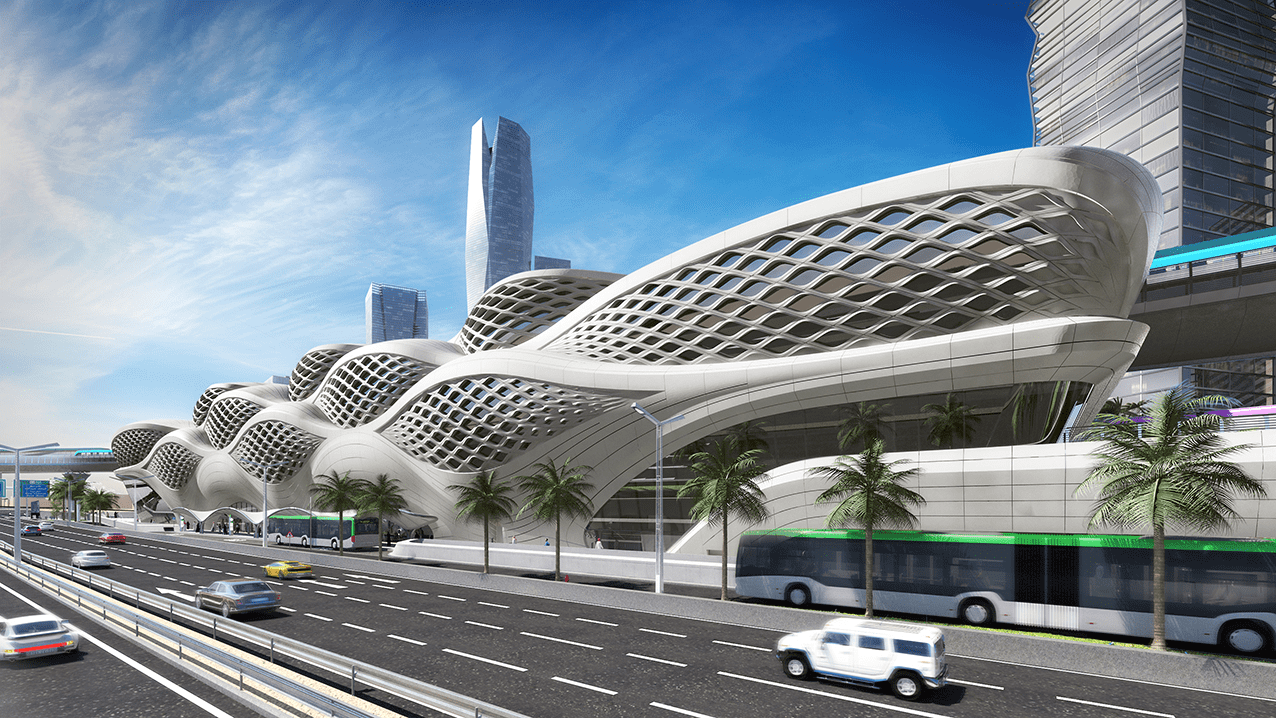
Cultural Aesthetics
The station architecture draws from Riyadh’s desert environment, blending modern geometry with traditional Islamic patterns. The use of sand-colored facades, geometric motifs, and locally inspired textures ensures the metro feels rooted in Saudi identity rather than imposed from abroad.
The flagship King Abdullah Financial District (KAFD) Station, designed by Zaha Hadid Architects, is a futuristic icon. Its flowing, interwoven metallic exterior mimics desert wind formations, while inside, its multi-layered concourse guides passengers intuitively through platforms, retail areas, and pedestrian corridors.
Environmental Engineering
Riyadh’s intense summer heat demanded advanced environmental design solutions:
- Natural ventilation systems reduce dependence on air conditioning.
- Solar shading devices minimise heat gain and energy consumption.
- Photovoltaic panels supplement the station’s power.
- Recycled water systems support landscape irrigation.
This integration of passive cooling techniques and energy efficiency technologies sets a new standard for sustainable Riyadh infrastructure development.
Building the Backbone: Engineering the Riyadh Metro
From the outset, the Riyadh Metro construction progress showcased exceptional project management and engineering innovation. Construction began in 2014, with tunnelling works commencing in early 2015.
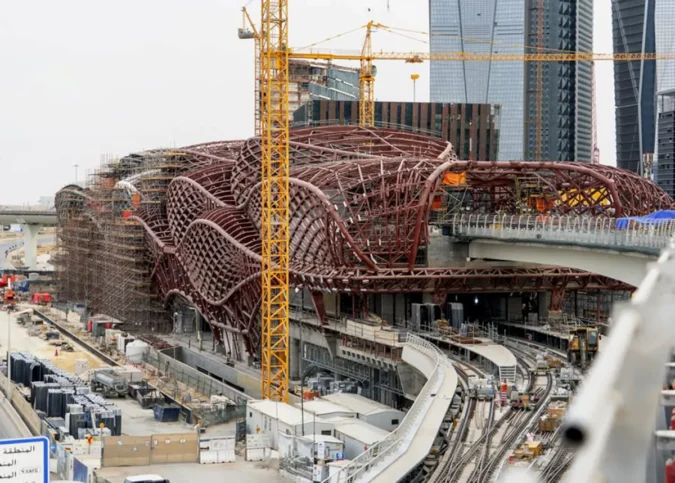
1. Tunnelling and Civil Works
To carve underground passages, seven massive Tunnel Boring Machines (TBMs), each weighing over 1,800 tonnes, were deployed to dig 32 kilometres of underground routes. The tunnels were reinforced with pre-cast concrete segments designed to withstand high pressure and temperature fluctuations.
2. Viaducts and Elevated Tracks
Above ground, long viaduct sections stretch over major road corridors, minimising disruption to existing infrastructure. Engineers employed precast segmental bridge technology, accelerating assembly while maintaining precision alignment.
3. Stations and Depots
The 85 stations are not only functional but also serve as social and commercial spaces. They include retail zones, coffee shops, digital kiosks, and mobility hubs for e-scooters and bikes, bringing a new dimension to Saudi Arabia’s metro project as both transport and lifestyle infrastructure.
4. Testing and Commissioning
Between 2022 and 2024, the project entered its testing phase. Driverless trains underwent trials for braking performance, communication systems, and real-time surveillance. Rigorous simulations ensured safety compliance with international urban rail standards.
Smart Mobility: Technology That Moves the City
The Riyadh Metro represents the convergence of automation, AI, and big data, the foundations of next-generation public transport systems.
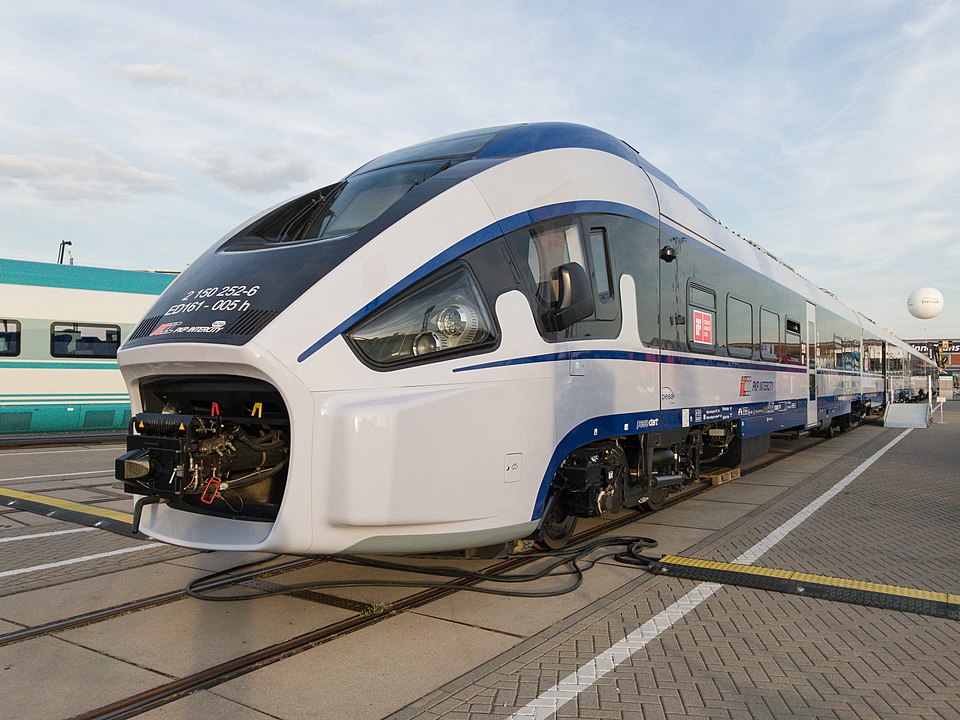
1. Automation
All 190 trains are fully driverless, guided by a central automated control centre. This ensures high-frequency departures, reduced delays, and optimised energy consumption. Trains are capable of 90 km/h speeds and feature automatic door synchronisation, real-time diagnostics, and adaptive braking systems.
2. Digital Passenger Experience
Passengers benefit from Indra’s smart ticketing system via mobile apps, contactless cards, and integrated e-wallets. The system is connected to a unified urban mobility platform linking metro, bus, and taxi services for seamless travel planning.
3. Data-Driven Efficiency
IoT sensors embedded across the network continuously monitor equipment health, passenger flow, and air quality. These data insights enhance operational decision-making, reduce maintenance downtime, and improve the overall commuter experience, key hallmarks of smart city transport systems in Saudi Arabia.
Economic and Social Transformation
The $22.5 billion Riyadh Metro Project is not only a transport investment but a nation-building catalyst.

1. Job Creation and Skill Transfer
During construction, the metro employed over 40,000 engineers, technicians, and labourers, including thousands of Saudi nationals. Specialised training programs equipped local engineers with expertise in tunnelling, project management, and railway systems, strengthening the Kingdom’s domestic engineering capacity.
2. Stimulating Economic Growth
By improving connectivity, the metro encourages business expansion along key corridors such as KAFD, Al Olaya, and King Abdullah Road. It’s projected to increase property values by 15–20% near stations and attract billions in real estate investments.
3. Sustainability and Environmental Gains
Traffic congestion has long been a challenge in Riyadh. The metro is expected to remove 250,000 cars from roads daily, cutting annual CO₂ emissions by approximately 500,000 tonnes. This aligns with Saudi Arabia’s pledge to achieve net-zero emissions by 2060.
4. Urban Equity and Inclusion
Affordable and efficient transport empowers low- and middle-income residents by providing access to jobs, education, and healthcare. The metro’s inclusive design includes women-only carriages, wheelchair accessibility, and visual-audio guidance for passengers with disabilities.
Construction Timeline: From Blueprint to Reality
| Year | Milestone |
| 2013 | Contract awards and consortium formation |
| 2014 | Groundbreaking and initial tunnelling works |
| 2015-2017 | Excavation and major civil works completed |
| 2018-2020 | Track laying, power, and signalling installations |
| 2022-2024 | System testing and integration |
| 2025 (expected) | Full network launch to the public |
Despite the scale, the project maintained remarkable schedule adherence, considering its complexity and climatic challenges.
Lessons Learned: Redefining Megaproject Management
Executing a project of this magnitude offered invaluable lessons in project coordination, risk management, and local integration.
- Consortium Collaboration: Global coordination between over 30 international contractors and thousands of local suppliers proved the power of partnership in megaprojects.
- Adapting to Harsh Climates: Materials were customised to withstand desert conditions, including UV-resistant polymers, temperature-tolerant tracks, and sand filtration systems for air intakes.
- Public Communication: Continuous updates through digital dashboards and city-wide campaigns built public trust, crucial for megaprojects in densely populated areas.
These insights are now shaping future Saudi infrastructure projects, such as the Neom Line Railway and Jeddah Metro Project.
How the Riyadh Metro Will Transform Saudi Arabia’s Transport Future
The metro’s full operation will herald a new era for urban mobility in the Kingdom. The benefits will ripple through every aspect of daily life and business.
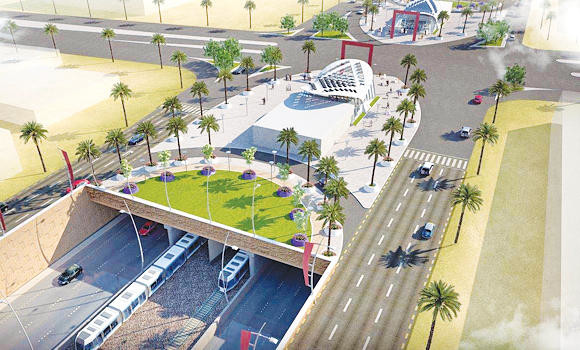
1. Urban Transformation
The project supports Transit-Oriented Development (TOD), integrating housing, retail, and office spaces around metro stations to create vibrant, walkable urban centres.
2. Mobility Integration
The Riyadh Metro will connect directly with King Khalid International Airport, Riyadh Bus Rapid Transit, and future high-speed rail links, forming the nucleus of a nationwide transport grid.
3. Cultural Shift
As public transport becomes mainstream, it will reshape commuting culture in a country long reliant on private cars. This shift toward collective mobility marks a defining moment in Saudi Arabia’s urban modernisation.
The Riyadh Metro and Vision 2030: A Shared Mission
The Riyadh Metro Project directly aligns with Saudi Arabia’s goals of Vision 2030, which seeks to:
- Diversify the economy beyond oil.
- Create sustainable urban environments.
- Empower citizens through accessible public services.
- Position Saudi Arabia as a global logistics hub.
Through its modern design, clean energy systems, and social inclusion, the metro serves as a tangible reflection of the Kingdom’s commitment to innovation-led development.
Challenges Overcome Along the Way
No megaproject is without obstacles. The Riyadh Metro faced several:
- Complex Coordination: Managing 6 lines and 3 global consortia simultaneously tested supply chain synchronisation.
- Pandemic Delays: COVID-19 briefly disrupted supply logistics and workforce mobility, requiring agile schedule adjustments.
- Environmental Constraints: High heat, dust storms, and ground conditions demanded specialised engineering materials.
- Cultural Integration: Introducing public transport in a car-centric society required public awareness campaigns and incentives.
Overcoming these hurdles reinforced Saudi Arabia’s growing capability in delivering world-class infrastructure megaprojects.
A Blueprint for Future Smart Cities
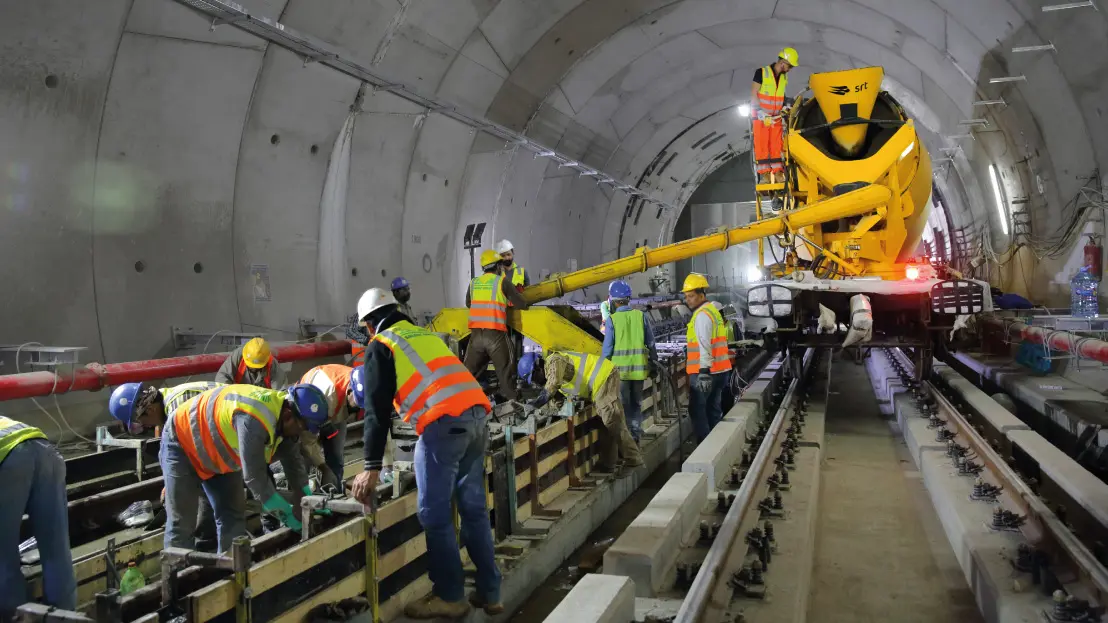
As Saudi Arabia accelerates toward a high-tech urban future through projects like NEOM, The Line, and Qiddiya, the Riyadh Metro Project acts as a living blueprint for integrated smart city mobility.
The Saudi Arabia metro project is a digital backbone, real-time analytics, and green infrastructure that demonstrates how transport can serve as both a mobility solution and a sustainability enabler. The project’s data ecosystem can also inform urban planning, traffic management, and environmental policy across the Kingdom.
Conclusion: The Beating Heart of a New Riyadh
The Riyadh Metro Project represents the soul of Saudi Arabia’s modernisation. It connects people, fuels economic activity, and demonstrates what’s possible when vision, engineering, and technology converge with purpose.
When trains begin to glide across Riyadh’s skyline in full operation, they will carry more than passengers; they’ll have the story of a nation reinventing itself for the future. The $22.5 billion Riyadh Metro stands as a living monument to Vision 2030: bold, smart, and unapologetically transformative.
Redefining the Future of Urban Transport
Stay informed on the world’s most ambitious transportation engineering marvels, such as the Riyadh Metro Project, with ConstructionFrontier.com, your trusted source for expert insights, megaproject updates, and smart infrastructure trends shaping the future of cities.

